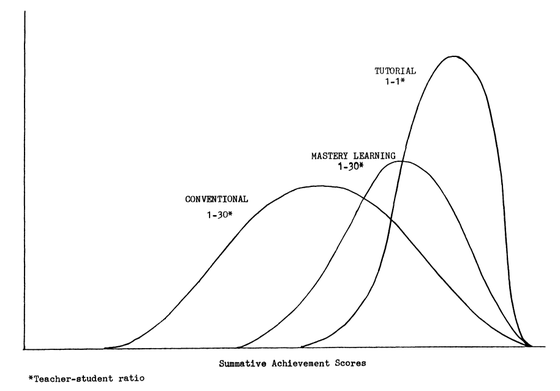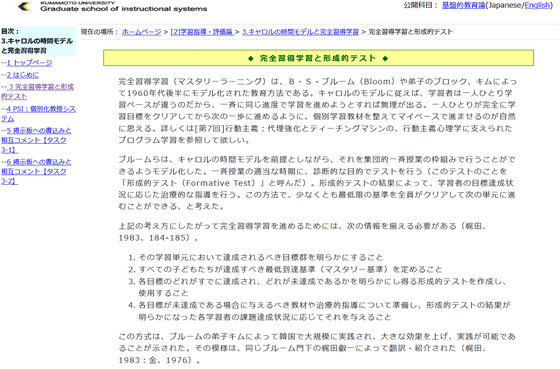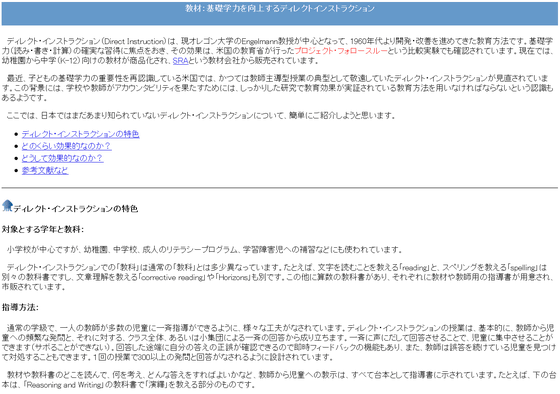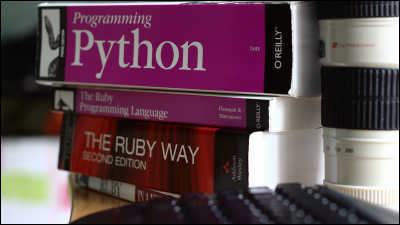What is the reality of the research results that '98% of students who receive one-on-one tutoring are better than average'?

In 1984, Professor
Nintil --On Bloom's two sigma problem: A systematic review of the effectiveness of mastery learning, tutoring, and direct instruction
https://nintil.com/bloom-sigma/
In 1984, Professor Bloom announced, 'Compared to general lessons, complete learning increases the student's test score by the standard deviation . In addition, one-on-one tutoring based on complete learning is available. The test score will be increased by two standard deviations. ' This result means that '98% of students who receive tutoring through complete learning can score above the median of students who receive lesson-based tutoring.'

Complete learning is a simple test of the content of the course in the course of learning, and it is confirmed in sequence whether the educational goals have been achieved. If not, the remaining supplementary lessons, homework, etc. are followed until the retest is passed. It is an educational method that imposes up.
Complete learning and formative testing
https://www.gsis.kumamoto-u.ac.jp/opencourses/pf/2Block/03/1_text.html

Professor Bloom's presentation had a great influence on the educational society of the time, and many verification tests were conducted. The effect of one-on-one tutoring based on complete learning varies depending on various conditions such as the learning unit, but according to the results of a meta-analysis analysis that comprehensively analyzed 101 studies from 2000 to 2014. The average was 0.79 standard deviation. It is far inferior to the result of '2 standard deviations' proposed by Professor Bloom, but the effect is still great.
On the other hand, the effect of complete acquisition learning is 0.05 standard deviation in the meta-analysis analysis conducted in 1983 for the survey in junior high school, and the meta-analysis analysis conducted in 1990 mainly for the survey in the university. The effect was significantly different depending on the study, with a standard deviation of 0.52. As for why this variability was born, Nintil argues that 'complete learning is variability due to the lack of consistent teaching methods.'
What Nintil claims to be important in complete learning is the 'direct instruction' methodology. Direct instruction is an educational method that 'eliminates the ad-lib of teachers who are teaching and gives guidance completely according to the script.' In direct instruction, teachers are thoroughly stipulated not only in dialogue but also in 'how to take a break'. See below for examples of direct instructions.
Teaching materials: Direct instructions to improve basic academic ability
https://www.workitout.jp/simamune/contents/s_DI.html

A lot of meta-analysis analysis has been done for direct instruction, and the effect is said to be about 0.5 standard deviation.
Following a series of results, Nintil mentioned 'individual instruction by computer system'. Students instructed by the Defense Advanced Research Projects Agency (DARPA) digital tutoring system for the Navy in 2010 have 1.25 standard deviations for students instructed by human teachers and 2.81 standard for students who have only taken classes. By giving an example that the deviation was also exceeded, he pointed out that there is a problem that the sample size is less than 50 people, but he states that he is promising individual guidance by computer system. It is said that it is difficult to design a computer system for individual instruction so that it has not been put into practical use, but since one-on-one individual instruction by humans has a problem that it costs money, Nintil expects a computer system. He says he is doing it.
Related Posts:
in Note, Posted by darkhorse_log







